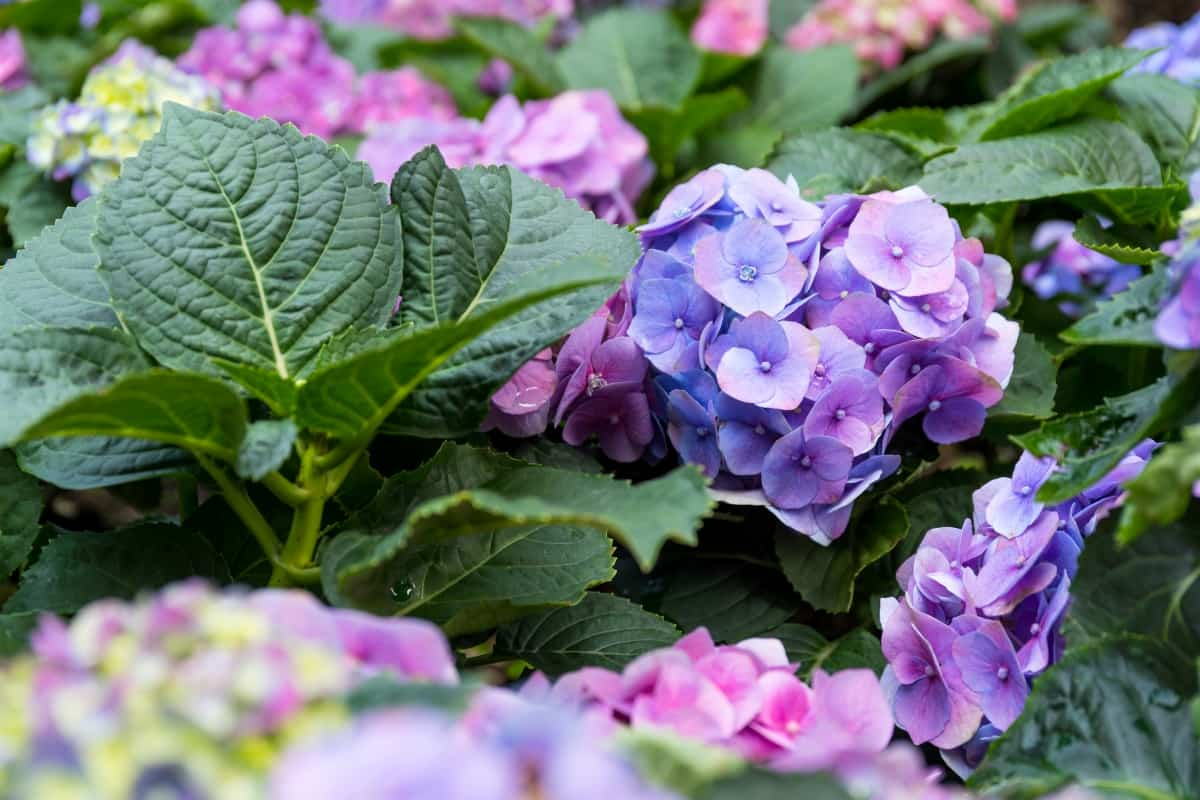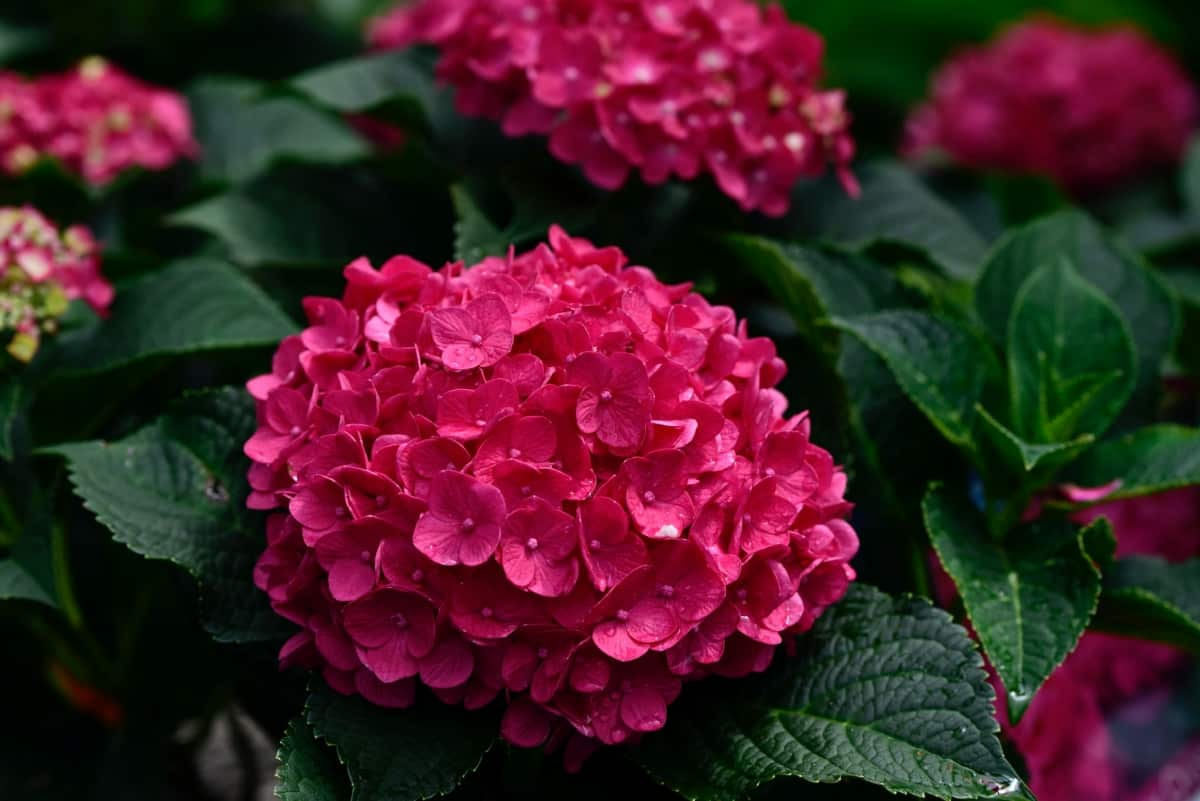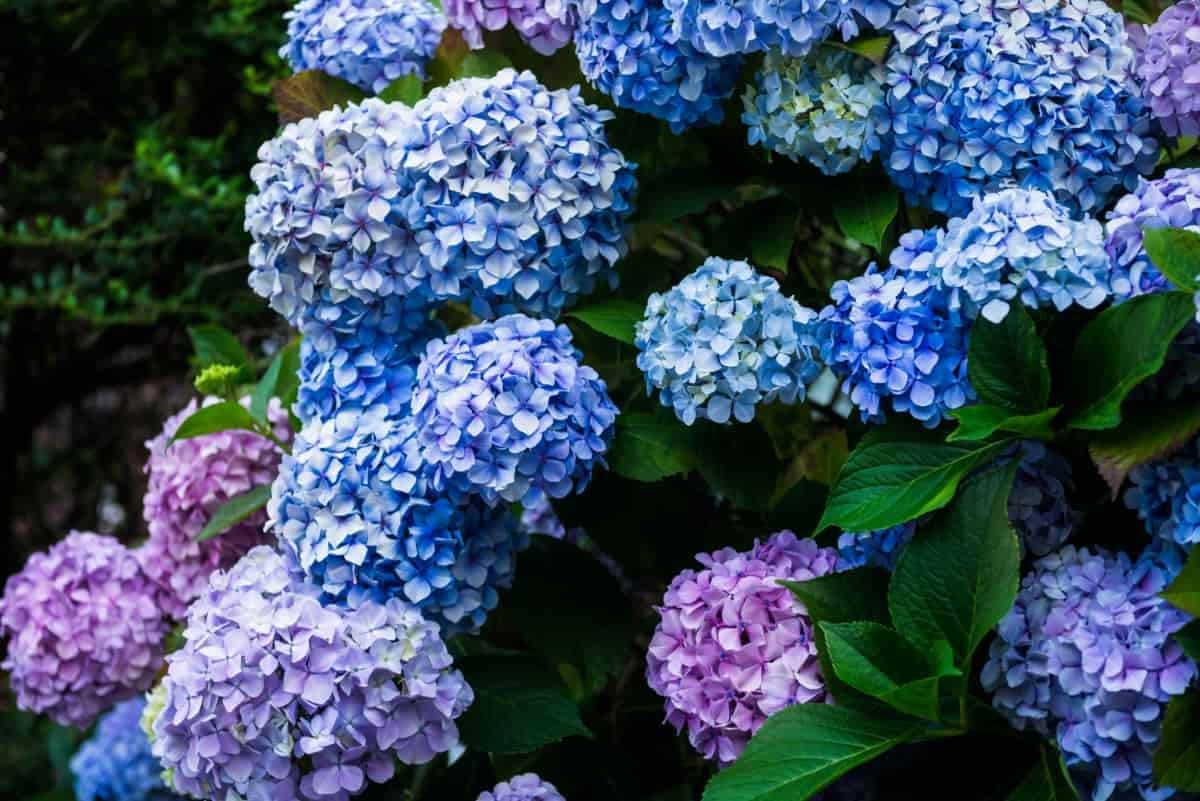With their show-stopping clusters of flowers, Hydrangeas enhance the outdoor space. Depending on the variety and budget of the gardener, the best fertilizer to use on hydrangeas will vary. For maximum results, some authorities recommend special fertilizer mixes, but hydrangeas can thrive with a more relaxed approach.

Various fertilizers can be used effectively, including chemical fertilizers and organic matter. Organic methods, such as applying manure and composting around the roots, produce excellent results and improve soil conditions. For maximum results, organic additions can also be combined with chemical fertilizer.
Best Fertilizer for Hydrangea
An Overview of The Role Fertilizers Plays in Plant Health, Growth, and Development
Hydrangea growers look forward to the nutritional benefits associated with growth, flowering, and their associated benefits. The nutrients necessary for plants can be categorized into macronutrients, secondary nutrients, and micronutrients. A plant’s macronutrients are those essential nutrients it needs in large amounts to survive. NPK stands for these three nutrients if you’ve seen them on fertilizer packages.
- A major role is played by nitrogen in the growth of leaves and stems. Flowering and fruiting depend heavily on phosphorus.
- Finally, potassium promotes root growth and overall health. While each nutrient serves a specific purpose, they work together to keep plants healthy and thriving.
- A secondary nutrient is mineral-like calcium or sulfur. The amounts of these nutrients are slightly smaller than those of the macronutrients, but they are equally necessary for plant growth.
- Lastly, micronutrients like iron and boron are needed in very small amounts. Plants can suffer from serious health issues if deficient, even when required in lesser amounts.
- The soil contains these nutrients, which plants absorb. Adding fertilizer can increase hydrangea soil nutrients when it lacks them. While some are diluted in water for immediate use by the roots, others break down slowly over time to enrich the soil.
Symptoms Your Hydrangeas Need Nutrients
Your Hydrangeas will quickly show signs of trouble if you’ve planted in poor soil or haven’t fertilized for a while. First of all, there are no flowers in sight, which is a real disappointment. This common problem is caused by insufficient sunlight or incorrect pruning techniques. Nutrient deficiencies, particularly phosphorus deficiencies, could also be at fault.
When you test your soil, you can determine which nutrients are needed to solve the problem. Yellowing leaves are also something to be aware of, as they could indicate an iron or nitrogen deficiency, even though this is a less common problem. Chlorosis is characterized by yellowing with green veins, resulting in a mottled appearance. The leaves of Hydrangeas can also turn yellow due to root rot or heavy shade, but this is not as common.
There will also be a yellow color instead of a mottled yellow on the leaves. It is also possible for lack of growth to be due to nutrient deficiencies. Hydrangea species and cultivars each have a mature height. If your plant hasn’t reached its full height or its leaves and flowers look small and diminished, check the soil’s nutrients.
Key Considerations While fertilizing Hydrangeas
- If you are growing a color-changing Hydrangea species, you should know that some fertilizers are formulated for specific colors. Using blue hydrangea fertilizer, for instance, will make your soil slightly acidic, turning your fertilizers blue.
- Inadequate soil can’t be compensated for by fertilizers. Maintain healthy soil by amending it with compost and mulching it with organic materials throughout the season.
- When you suspect that you have a nutrient deficiency, the first thing you have to do is eliminate other factors that could be contributing to it. When you apply too much fertilizer to the soil, it’s hard to remove it.
- During the process, it’s prudent to wear gardening gloves because hydrangeas are toxic.
In case you missed it: The Best Fertilizer for Roses: When and How to Apply

How Often Should You Fertilize Hydrangea Plants, and When Should You Fertilize Them
Hydrangeas must be fed at different times during the season for different purposes. An early spring fertilizer that targets flowers can encourage more blooms throughout the summer. Giving a second dose at the end of the season is recommended to ensure continued health until the following spring, when growth is expected to start again. A lower-strength liquid fertilizer can also be applied at the end of spring if your plant isn’t performing well.
You should also avoid overdoing it to maximize your flowering season. Overfertilization can ruin your season or permanently damage your plants if used excessively. There is no need to fertilize after the last dose of fertilizer in the fall, applied a few weeks before the plants die back (and are ready to be cut back). You can fertilize the Hydrangeas again in early spring, depending on their performance. Your hydrangeas can also be moved or transplanted in late autumn if necessary.
The Best Fertilizer for Hydrangea Plants
If your Hydrangeas are growing well in fertile soil, then you can fertilize them with a balanced fertilizer consisting of equal parts nitrogen, phosphorus, and potassium. For best results, choose a fertilizer with an NPK ratio of 10-10-10. Those wishing to boost their Hydrangeas’ growth use a fertilizer with a higher phosphorus value, such as a 15-30-50 fertilizer. You will maximize your season by taking advantage of the higher concentrations and extra phosphorus.
During the growing season, slow-release fertilizers are the best for sustaining the plant. When you water hydrangeas, these nutrients break down slowly over time, giving the plants nutrients when needed. You can also add a low-concentration liquid fertilizer toward the end of spring if your plant lacks flowers.
How to Apply Fertilizer for Your Hydrangeas
In general, the process of applying fertilizer varies based on the fertilizer type you choose. When adding slow-release fertilizer to the soil, mix it gently to cover all the roots as much as possible. Ensure that the fertilizer extends to the edges of the growth. Prevent scorching by keeping the pellets of the stem. If you want to use other fertilizers, you need to dilute them in water and apply them to the soil when you water. Avoid overfertilizing by always diluting according to the instructions.
In case you missed it: The Best Fertilizer for Hyacinth: When and How to Apply

Conclusion
When it comes to getting as many flowers from your hydrangea plants as possible, fertilizer is an important component. You can ensure plants receive the right nutrients by monitoring their performance and applying fertilizer at the right time.
- Ultimate Guide to Ossabaw Island Hog: Breeding, Raising, Diet, and Care
- Ultimate Guide to Juliana Pig: Raising Facts, Size, Diet, Care, and Lifespan
- Raising Lleyn Sheep: Disadvantages, Price, Uses, Characteristics, and Care
- Ultimate Guide to Meishan Pig: Breed Facts, Breeding, Raising, and Care
- Ultimate Guide to Teacup Pigs: Raising, Diet, Lifespan, Cost, and Care
- Guide to Raising Poll Dorset Sheep: Facts, Profile, Characteristics, Uses, and Care
- Ultimate Guide to Bighorn Sheep: Characteristics, Diet, Lifespan, Breeding, and Lifecycle
- Ultimate Guide to Raising Katahdin Sheep: Farming Facts, Breed Profile, Uses, and Care
- Ultimate Guide to Raising Oreo Cows: Belted Galloways Farming Facts, Profile, Uses, and Care